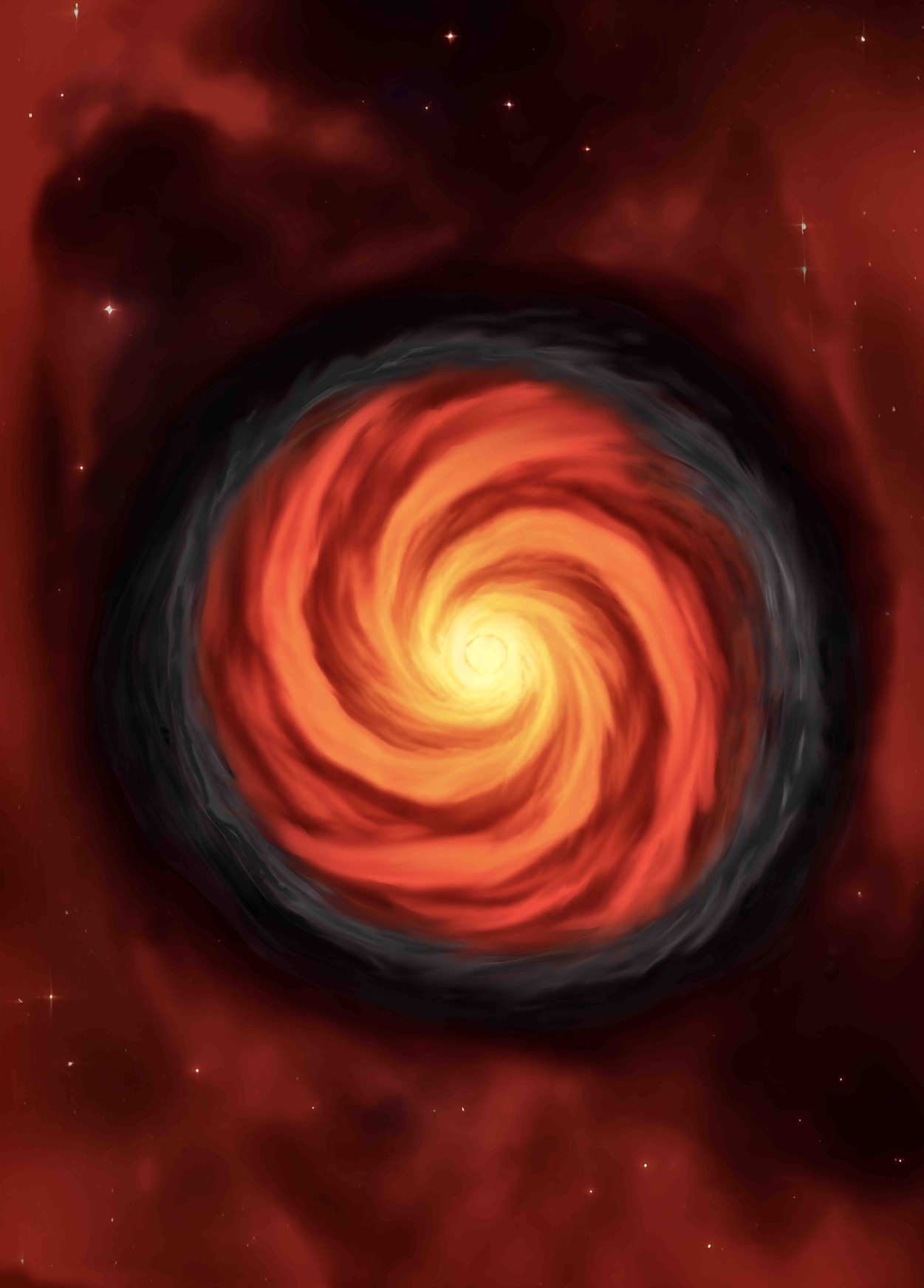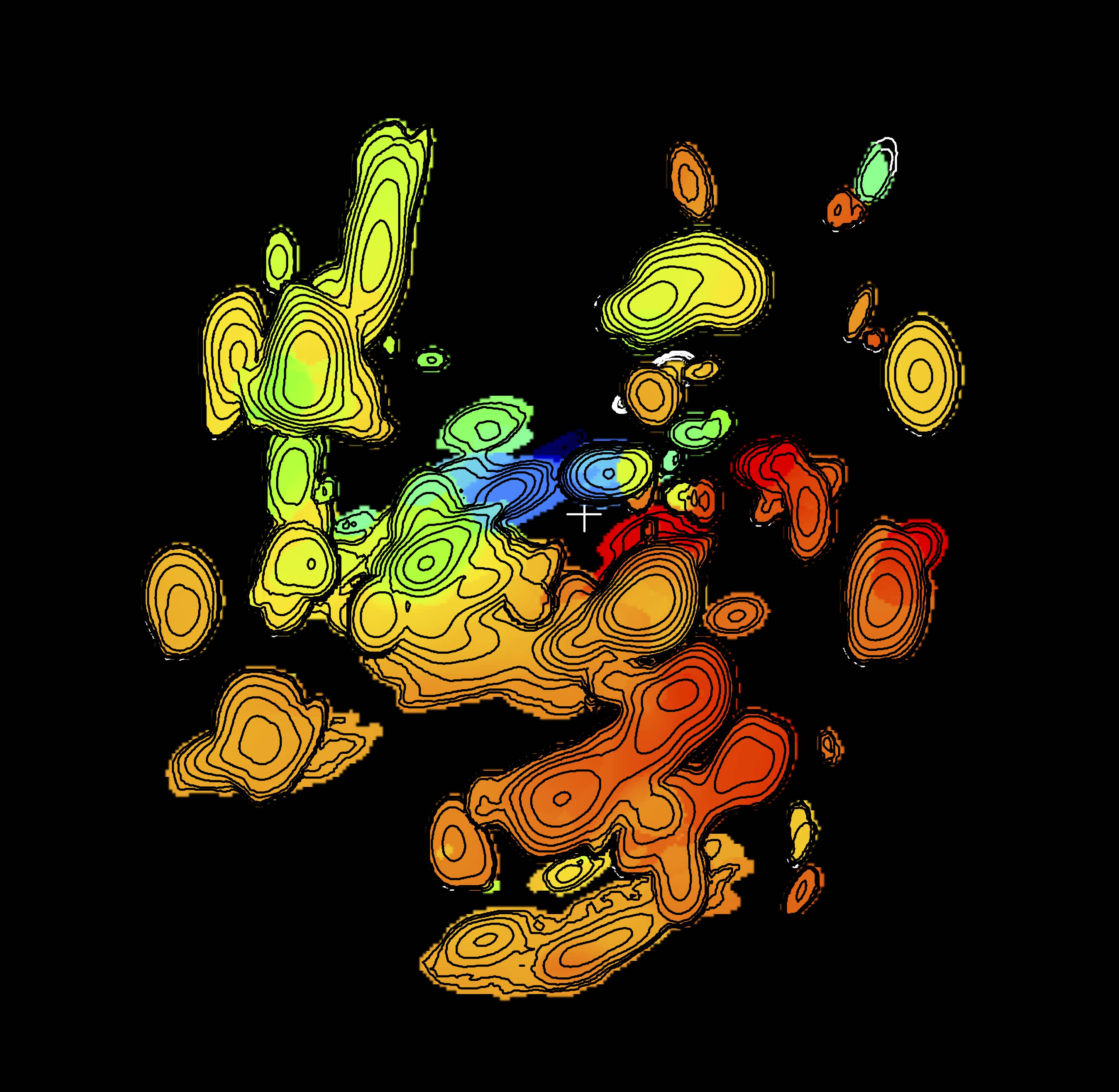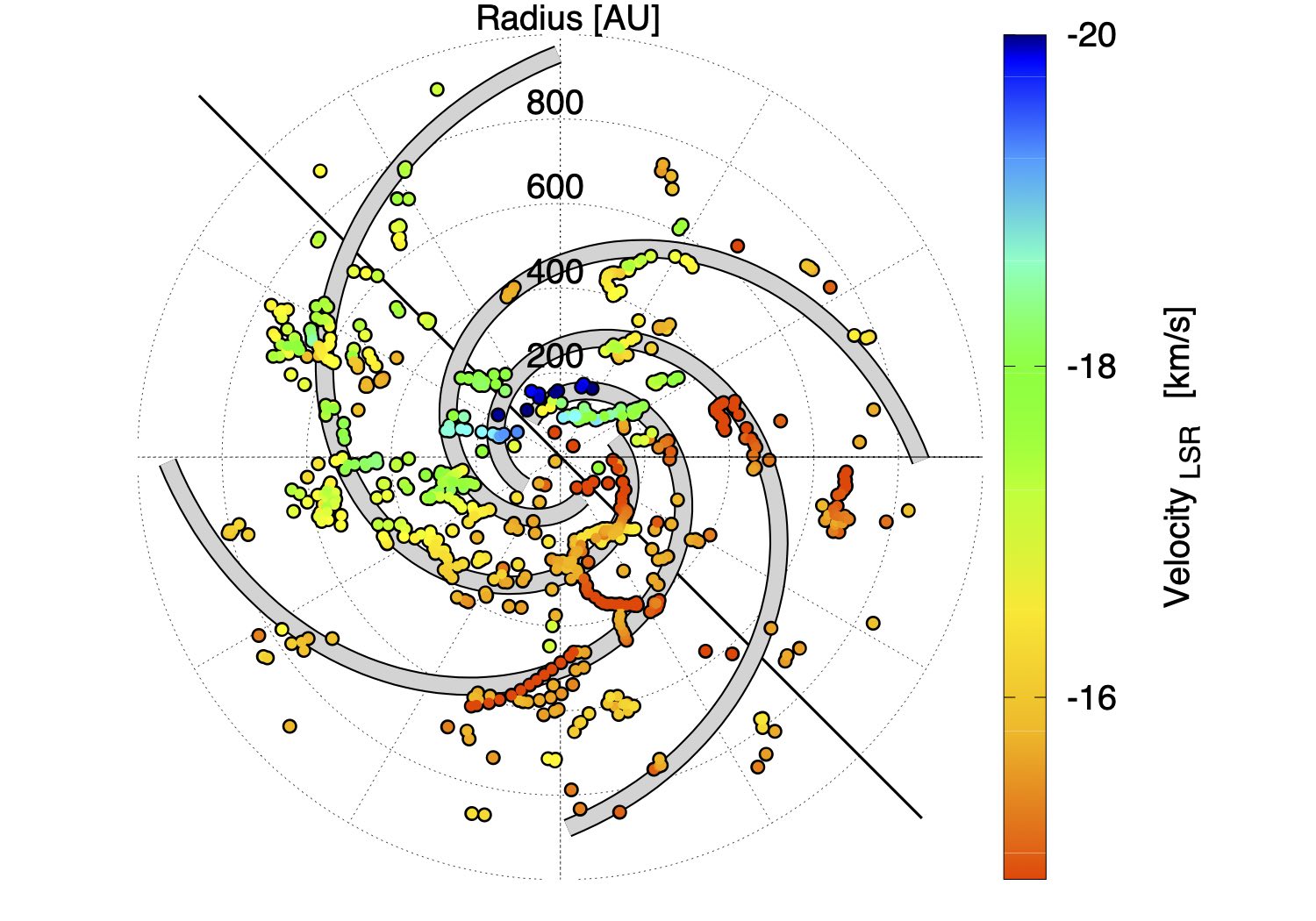Spiral Pattern Gives Clue to how High-Mass Stars Form

High-mass stars are 8 or more times more massive than the Sun. They act like atomic factories to generate many of the necessary building blocks for life in the universe and they alter the appearance and evolution of galaxies. The most massive stars become enigmatic black holes when they die. Despite their importance in the Universe, the process by which high-mass stars are born has been a mystery for many decades. It has recently become known that they form at the hearts of rotating disks of gas and dust, known as protostellar disks, which are ~1000 AU radius (that is, ~1000 times the distance at which the Earth orbits the Sun).
One theory which is emerging as a front runner in high-mass star formation research is the idea of ‘episodic accretion’ where by clumps of dusty gas occasionally fall from the protostellar disk onto the growing star, or ‘protostar’, at the center. These growth bursts supply the protostar with more than half of the mass it gains during its growth stage. However, these growth bursts occur on timescales of hundreds to thousands of years, and, lasting only a few months to years, are very rare events to witness. To date, astronomers have only witnessed a few growth bursts in high-mass protostars. The most recent, and the most intensely investigated was the 2019 growth burst in high-mass protostar G358-MM1.
The episodic accretion theory proposes that protostellar disks are clumpy and that spiral arms may emerge in the disk due to it experiencing the pull of its own self-gravity. Observing protostellar disks around high-mass protostars, let alone any spiral structure or clumpiness, has been a challenge for astronomers. Such disks, and their high-mass protostars, form inside dense clouds of gas and dust in turbulent stellar nurseries, which are for the most part invisible to conventional optical telescopes.
However, in a new Nature Astronomy publication, a team of astronomers who specialise in ‘maser’ emission - which is a microwave wavelength laser - were able to map a high-mass protostellar disk in higher detail than was achieved before. Using Very Long Baseline Interferometry (VLBI) arrays from around the world in an international collaboration, the team were able to discover spiral arms in the rotating disk of high-mass protostar, G358-MM1. This is the very same protostar which was seen to experience a growth burst in 2019.
The team used a new technique called ‘heat-wave mapping’ which used the growth burst’s own flash of radiation to map the surface of the disk using methanol masers. In total, 24 radio telescopes were used, from Oceana, Asia, Europe and America. All data were combined to produce an image of the G358-MM1 spiral disk with milliarcsecond (1/3600000th of a degree) resolution.
The discovery brings together evidence of several of the aspects of episodic accretion theory: a rotating disk, growth bursts, and spiral structure which helps to feed the growing high-mass protostar.
The team will continue to search for growth bursts in high-mass protostars, using a global cooperative of traditional radio telescopes, called the Maser Monitoring Organisation (M2O). So far, only 3 high-mass protostellar bursts have been seen, the team hopes to find many more to explore more growth bursts in other high-mass protostars.
G358-MM1 has four spiral arms which wrap beautifully around the protostar. The spiral arms help to feed disk material down to the center of the system where it can reach the protostar and feed it. If more spiral systems and growth bursts are discovered in other high-mass protostars, either using heat-wave mapping or other observational techniques, then astronomers will be able to provide a better understanding of the births of high-mass stars, which are the energetic progenitors of life in the Universe.
These results appeared as R. A. Burns et al. “A Keplerian disk with a four-arm spiral birthing an episodically accreting high-mass protostar” in Nature Astronomy on February 27, 2023.
Figures

Fig.1: Artist’s impression of the 4 arm spiral disk which houses the episodically accreting high-mass protostar G358-MM1.
Credit: Charlie Willmott, Ross Burns

Fig.2: Map of the 6.7 GHz methanol maser emission in G358-MM1, imaged using heatwave mapping. The cross in the center represents the location of the high-mass protostar determined in millimetre wavelength interferometric imaging. Spiral structures can be seen, wrapping around the protostar in a clockwise direction. Colours show the velocity of gas. Regions in blue are moving toward us while red regions show gas that is moving away. Overall, the colours indicate that the system is rotating, in the form of a Keplerian disk, around G358-MM1

Fig.3: Spiral structures in G358-MM1 revealed by analyzing the heatwave mapping images. There are four spiral arms wrapping around the protostar as shown by the gray bold lines. (Credit: R. A. Burns)
Lins
- NAOJ News Science ⌈Spiral Pattern Gives Clue to how High-Mass Stars Form⌋
- Division of Science, NAOJ ⌈Spiral Pattern Gives Clue to how High-Mass Stars Form⌋
CSS not active
JavaScript not active


